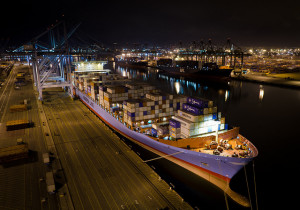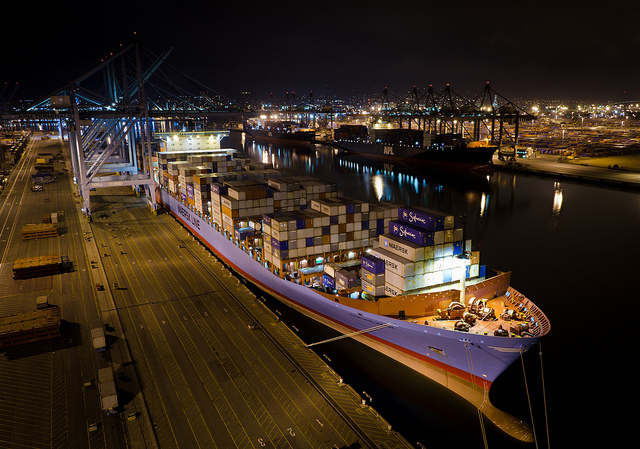 The port industry in the United States continues to be an enormous contributor to the country’s growth, its economic value rising by more than 40% and its share of GDP expanding by 6% since 2007, according to a new study.
The port industry in the United States continues to be an enormous contributor to the country’s growth, its economic value rising by more than 40% and its share of GDP expanding by 6% since 2007, according to a new study.
From 2007 to 2014, the total economic value that U.S. coastal ports provide in terms of revenue to businesses, personal income, and economic output by exporters and importers rose 43 percent to $4.6 trillion, according to the “The 2014 National Economic Impact of the U.S. Coastal Port System.”
This, the paper added, accounted for 26 percent of the nation’s $17.4 trillion economy in 2014, up from 20 percent of its $16.1 trillion economy in 2007.
The new study was published recently by Martin Associates, a Lancaster, Pennsylvania-based transport research firm, seven years after it released a similar nationwide analysis.
Additionally, said the report, in 2014, port and importer/exporter revenues generated $321.1 billion in federal, state, and local tax revenues, up 51 percent compared to seven years ago.
Other gains from port-related activity since 2007 include jobs generated jumping 74 percent to 23.1 million, and personal wages and local consumption related to the port sector increasing to $1.1 trillion, with the average annual salary of those directly employed by port-related businesses equating to $53,723.
“The growth in jobs and economic importance of America’s seaports reflects the fact that the value of international cargo handled at these ports increased by $400 billion since 2007, reaching about $1.8 trillion in 2014,” said John Martin, president of Martin Associates.
“It’s important to emphasize that the key growth in our international trade was in U.S. exports, which saw a 60 percent increase in value over the past seven years,” he added.
He noted that each dollar increase in the value of export cargo supports significantly more jobs in the U.S. than does a dollar value of growth in imports. He also emphasized that the robust growth in the economic impact value from U.S. ports occurred despite the economic recession that severely hampered marine cargo activity between 2008 and 2012.
“The growth in the contributions of our ports to the nation’s economy underscores the need to invest in infrastructure and technology to support and foster good jobs, national security, international trade and our standard of living,” said Martin.
Kurt Nagle, president and CEO of the American Association of Port Authorities (AAPA), agreed with the need for more federal investment in America’s seaports.
He added, “On the land-side alone, AAPA’s U.S. member ports have identified at least $28.9 billion in needed investments by 2025. These necessary road, rail, bridge and tunnel improvements are crucial to enable our seaports to efficiently handle their expected cargo volumes, continue providing dramatic economic and jobs impacts, and enhance America’s international competitiveness.”
AAPA represents 160 seaport authorities in the United States, Canada, Latin America, and the Caribbean, and more than 300 sustaining and associate members, firms, and individuals with an interest in seaports.
Photo: Lance Cunningham





